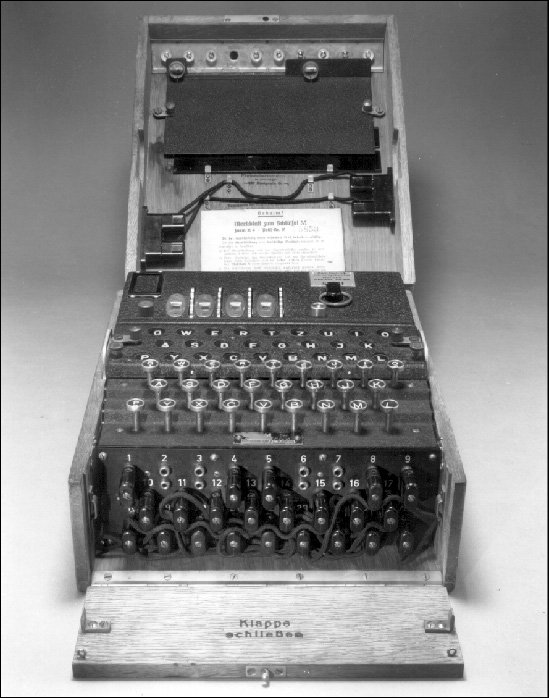Section 7.1. Some History
7.1. Some HistoryThe earliest encryption systems, sometimes called codes or ciphers, date back to early Egyptian daysaround 2000 B.C., when funeral messages consisting of modified or encrypted hieroglyphs were carved into stoneand were designed not to keep the messages a secret, but to increase their mystery. (This leads to the question: considering that hieroglyphs often contain of pictures of animalscould a dyslexic stone cutter have gotten into trouble for flipping the bird?) The history of cryptography extends through the centuries from ancient Egypt to India, Mesopotamia, Babylon, Greece, and on into Western civilization and eventually to the dawn of the computer age. From the Spartans to Julius Caesar, from the Old Testament ciphers to the Papal plotters of the fourteenth century, from Mary, Queen of Scots to Abraham Lincoln's Civil War ciphers, cryptography has been a part of war, diplomacy, and politics. Mary, Queen of Scots, for example, lost her life in the sixteenth century because an encrypted message she sent from prison was intercepted and deciphered. During the Revolutionary War, Benedict Arnold used a codebook cipher to communicate with the British. Throughout history, governments and individuals have protected secret communications by encoding them. The development of ciphers and ciphering devices over the centuries has culminated in the complex computer-based codes, algorithms, and machines of modern times. The protection of communications has always been particularly critical in times of war and political strife. The development of modern cryptography owes much to the research conducted under the pressures of World War II, and particularly to the breaking of codes produced by a machine known as the Enigma machine. The Enigma machine was originally developed in Germany by an electrical engineer, Arthur Scherbius, during World War I. He offered an early version of the machine to the German navy and foreign office as early as 1918. The machine was originally rejected, but after some additional security enhancements were made to the commercial model, the German navy began using Enigma machines early in 1926. The Enigma machine (shown in Figure 7-1) worked as follows: an operator typed the original text of the first letter of the message to be encrypted on the machine's keyboard-like set of buttons. The battery-powered machine encrypted the letter and, using a flashlight-type bulb, illuminated a substitute letter on a glass screen. What was special about the Enigma machine was a set of wheels known as rotors. Made of rubber or some other nonconducting material, the rotors contained electrical contacts, which were wired in such a way that turning the rotors would change the correspondence between letters. Before the encryption began, the operator would set these rotors to an initial position. When the operator typed the first character"A", for example, the machine might illuminate a light corresponding to "P". The operator would then copy the letter "P" onto an encryption worksheet, the machine would advance the rotors, and the operator would enter the next letter. With the new rotor settings, the correspondence between letters would change. An "A" might now be translated to an "X". This process would continue until the entire message was encrypted. The encrypted message could now be transmitted by radio to its destination, usually a U-boat in the Atlantic. Figure 7-1. The Enigma machine (reproduced by permission of the Smithsonian Institution) At the other end of the communication, the operator trying to decrypt a message coded by the Enigma machine would need another, identically built Enigma machine and would also need to know the original settings of the rotors. The first breakthrough in solving the Enigma codes came from Poland. In the late 1920s, the Poles formed a code cracking team that applied the science of cryptanalysis to work on breaking the German codes. Marian Rejewski and two other mathematicians cracked some of the early Enigma messages. In the early 1930s in France, a German named Hans-Thilo Schmidt offered French intelligence some information about setting the Enigma keys. The French cryptanalysts didn't have the resources to take advantage of this information and the British also rejected the information as being insufficient. The French offered the information to Poland, where Rejewski used it to make additional brilliant advances in cracking the Enigma codes. After the fall of Poland in 1939, the Poles passed their information on to the French and the British. As the Germans continued to change keys and to modify the design of the Enigma machine, the British built on the Polish solution. Under the direction of mathematician Alan Turing, and with the help of Enigma documents captured from U-boats sunk during the remainder of the war, the highly secret "Ultra" project began to decrypt German naval messages on a regular and timely basis. In the early 1940s, Americanssome of them from IBMmade their own contributions, based on knowledge they'd gained reconstructing Japanese diplomatic cipher machines through the "Purple" project. In the decades since World War II, the use of computers to break codes has transformed the codebreaking game and has contributed greatly to the use of cryptography in military and intelligence applications, as well as in systems used in everyday computer systems. |
EAN: 2147483647
Pages: 121